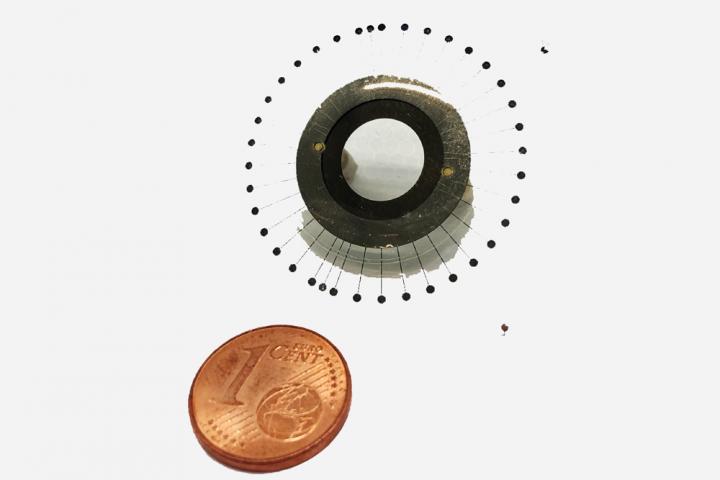
Credit: Photo: Pouya Rajaeipour
Together with the European Social Fund, the Federal Ministry for Economic Affairs and Energy (BMWi) is co-financing an EXIST Transfer of Research project within the Faculty of Engineering at the University of Freiburg with 745,000 euros. The project start date was Jan. 3, 2020.
The team at the Department of Microsystems Engineering (IMTEK) has developed a novel, transmissive optofluidic component for adaptive optics. Their Deformable Phase Plate (DPP) was developed for use in multiple fields such as optical communication, ophthalmology, optical testing and analysis methods, astronomy, material processing and microscopy. Adaptive optics improves the optical quality in all of the above-mentioned fields by compensating for disturbances to the optical systems in real time.
“In stark contrast to astronomy, in which adaptive optics today is standard in professional telescopes, its use in microscopy is still in its early stages. Not even the best microscopes are always able to achieve their full potential when imaging deep inside biological specimens. The technology underlying our DPP will fundamentally change the way adaptive optics improves the resolution and contrast of all microscopes,” explains project leader Dr. Stefan M. Weber.
Dr. Kaustubh Banerjee and Pouya Rajaeipur created the prototypes during their doctoral studies at IMTEK. The fundamental technology was invented by Dr. Ça?lar Ataman at the laboratory of Prof. Dr. Hans Zappe in the Department of Microsystems Engineering, a research group with more than 20 years of experience in optofluidics and imaging.
###
The EXIST Transfer of Research program supports outstanding research-based start-up projects that involve extensive and risky developments. The team was supported by the Founder’s Office at the University of Freiburg, which provides support to scientists with promising ideas who are interested in establishing a new start-up.
http://www.
Contact:
Department of Microsystems Engineering
University of Freiburg
Media Contact
Dr. Stefan M. Weber
[email protected]
49-302-218-0912





